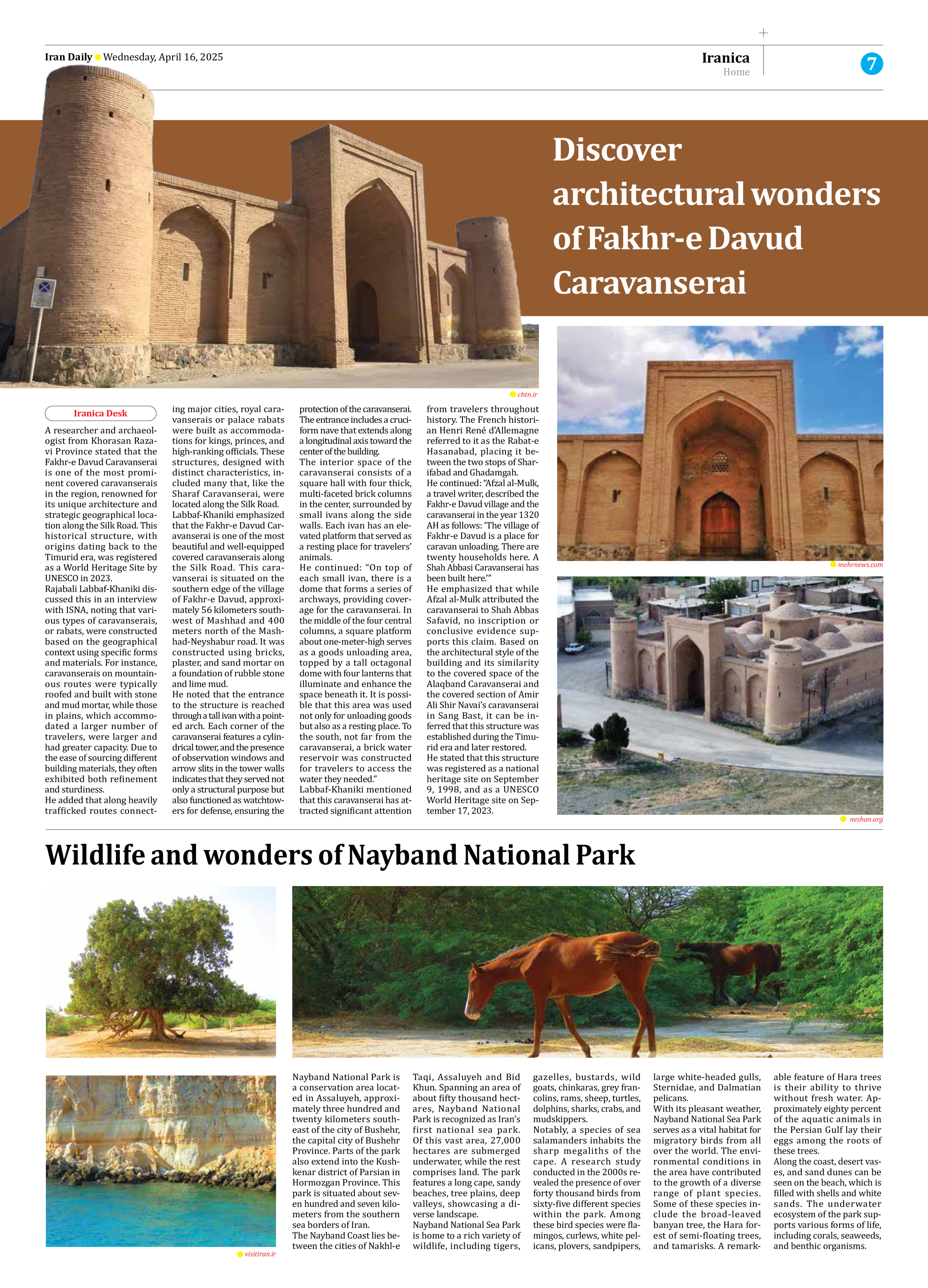
Copy in clipboard...
Wildlife and wonders of Nayband National Park
The Nayband Coast lies between the cities of Nakhl-e Taqi, Assaluyeh and Bid Khun. Spanning an area of about fifty thousand hectares, Nayband National Park is recognized as Iran’s first national sea park. Of this vast area, 27,000 hectares are submerged underwater, while the rest comprises land. The park features a long cape, sandy beaches, tree plains, deep valleys, showcasing a diverse landscape.
Nayband National Sea Park is home to a rich variety of wildlife, including tigers, gazelles, bustards, wild goats, chinkaras, grey francolins, rams, sheep, turtles, dolphins, sharks, crabs, and mudskippers.
Notably, a species of sea salamanders inhabits the sharp megaliths of the cape. A research study conducted in the 2000s revealed the presence of over forty thousand birds from sixty-five different species within the park. Among these bird species were flamingos, curlews, white pelicans, plovers, sandpipers, large white-headed gulls, Sternidae, and Dalmatian pelicans.
With its pleasant weather, Nayband National Sea Park serves as a vital habitat for migratory birds from all over the world. The environmental conditions in the area have contributed to the growth of a diverse range of plant species. Some of these species include the broad-leaved banyan tree, the Hara forest of semi-floating trees, and tamarisks. A remarkable feature of Hara trees is their ability to thrive without fresh water. Approximately eighty percent of the aquatic animals in the Persian Gulf lay their eggs among the roots of these trees.
Along the coast, desert vases, and sand dunes can be seen on the beach, which is filled with shells and white sands. The underwater ecosystem of the park supports various forms of life, including corals, seaweeds, and benthic organisms.







